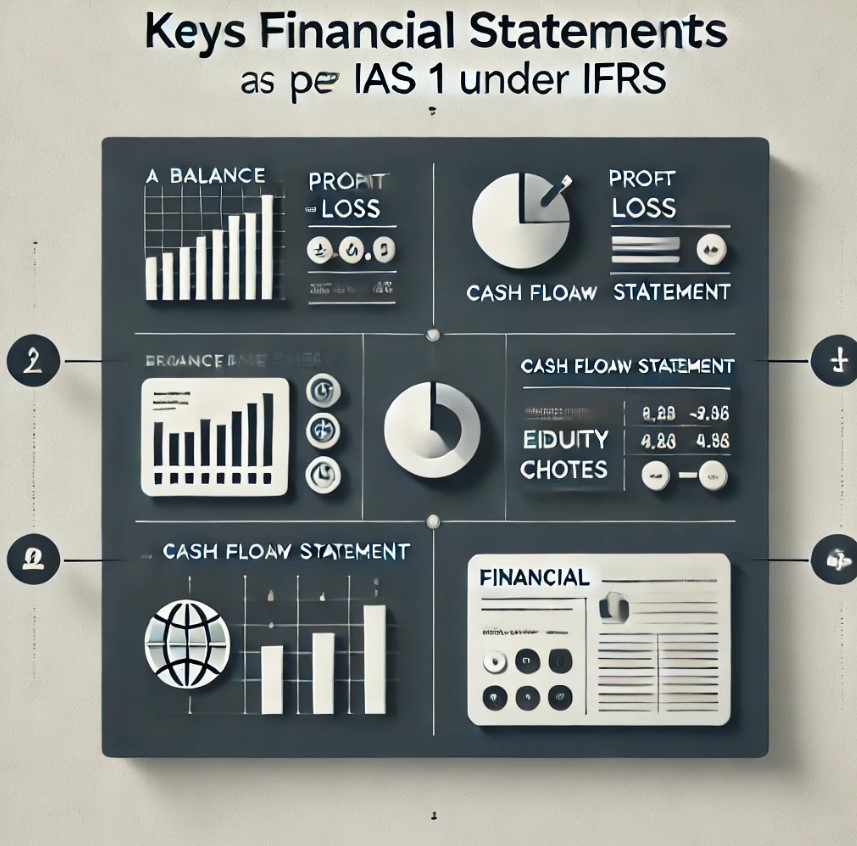
IAS 1 Explained: Guide to Financial Statement Presentation
🧾 Wanna present your financials like a pro?
Financial statements are more than just numbers—they're a story of your business. A story of performance, position, and prospects. But every good story needs a structure. That’s where IAS 1 – Presentation of Financial Statements comes in.
Financial reporting is no longer just about compliance—it’s about communication.
IAS 1 lays the foundation for financial storytelling that resonates with investors, stakeholders, and decision-makers across the globe. It brings discipline, transparency, and consistency to a world where trust is everything.
This standard acts as the foundation for all other International Financial Reporting Standards (IFRS), laying down the framework and guiding principles for preparing and presenting financial statements. Whether you're a multinational group or a business preparing to go global, understanding IAS 1 is non-negotiable.
🎯 What is IAS 1?
IAS 1 (International Accounting Standard 1) prescribes the basis for presentation of general-purpose financial statements to ensure they are comparable, understandable, and reliable.
It defines how financial information should be structured, classified, and disclosed in a way that allows users to interpret the results consistently across entities and time periods.
📌 Objective of IAS 1
The primary objective of IAS 1 is to:
- Set out overall requirements for the presentation of financial statements.
- Provide guidelines on their structure.
- Ensure that financial statements include the minimum content necessary for decision-making.
It does not deal with recognition or measurement of transactions—that is handled by other specific IFRS. IAS 1 only tells you how to present what you measure.
🧩 Components of a Complete Set of Financial Statements
IAS 1 requires a complete set of financial statements to include:
- Statement of Financial Position (commonly known as the Balance Sheet)
- Statement of Profit or Loss and Other Comprehensive Income
- Statement of Changes in Equity
- Statement of Cash Flows (as per IAS 7)
- Notes, comprising:
- Summary of significant accounting policies
- Other explanatory information
- Comparative Information for the previous period
- Statement of Financial Position as at the beginning of the earliest comparative period (in certain cases)
🔍 Scope and Applicability
IAS 1 applies to all entities that prepare general-purpose financial statements under IFRS. This includes:
- Listed entities
- Large private entities
- Multinational groups
- Entities seeking foreign capital or complying with cross-border reporting
It’s not sector-specific, making it relevant for manufacturing, service, technology, infrastructure, and other industries alike.

🧭 Key Presentation Principles of IAS 1
To ensure consistency and clarity in financial reporting, IAS 1 prescribes the following principles:
- Going Concern: The financial statements are prepared assuming the entity will continue operating into the foreseeable future.
- Accrual Basis of Accounting: Transactions are recorded when they occur, not when cash is received or paid.
- Materiality and Aggregation: Only material items are presented separately; immaterial items can be grouped.
- No Offsetting: Assets and liabilities, or income and expenses, should not be offset unless required or permitted by another IFRS.
- Consistency of Presentation: The structure and classification must remain consistent from one period to another unless a change is justified.
📊 Classification – Current vs. Non-Current
Assets and liabilities must be classified as either current or non-current, unless a liquidity-based presentation provides more relevant and reliable information.
Current items are those expected to be realized or settled:
- Within the entity’s normal operating cycle
- Within 12 months after the reporting period
- Or held primarily for trading
All other items are classified as non-current.
📄 Key Disclosures Required by IAS 1
Some of the key disclosure requirements under IAS 1 include:
- Significant judgments and estimates made in applying accounting policies
- Detailed movements in equity during the period
- Dividends declared and paid/proposed
- Capital management disclosures
- Comparative figures for all prior periods presented
- Any reclassifications, with explanations
- Going concern assumptions, if management is aware of material uncertainties
📘 Structure and Format of Financial Statements
IAS 1 allows for some flexibility in format, but mandates that certain line items and headings appear prominently. Entities should:
- Clearly distinguish assets, liabilities, and equity
- Separate current and non-current classifications unless inappropriate
- Break down the income statement into:
- Profit or Loss section
- Other Comprehensive Income (OCI) section
- Present additional line items or sub-totals when relevant
🧠 Importance of IAS 1 in Financial Reporting
The adoption of IAS 1 brings the following key benefits:
- Provides clarity and comparability to financial statement users
- Builds investor confidence through transparent and standardized reporting
- Helps management communicate business performance effectively
- Facilitates compliance with global listing and cross-border funding norms
- Enhances readiness for mergers, acquisitions, or foreign investments
In today’s global financial environment, high-quality presentation is a crucial part of financial storytelling.
💬 Final Thoughts
IAS 1 is not just a compliance checklist—it’s a storyboarding tool for your financial performance. It helps transform complex financial data into structured, comprehensible reports that serve investors, stakeholders, regulators, and management alike.
Understanding and applying IAS 1 effectively is the first step toward building trust and transparency in global financial reporting.
Whether you're preparing for international expansion, engaging with global investors, or simply aiming for better reporting quality, IAS 1 is where it all begins.
Are your financial statements telling the full story—or just showing the numbers?
